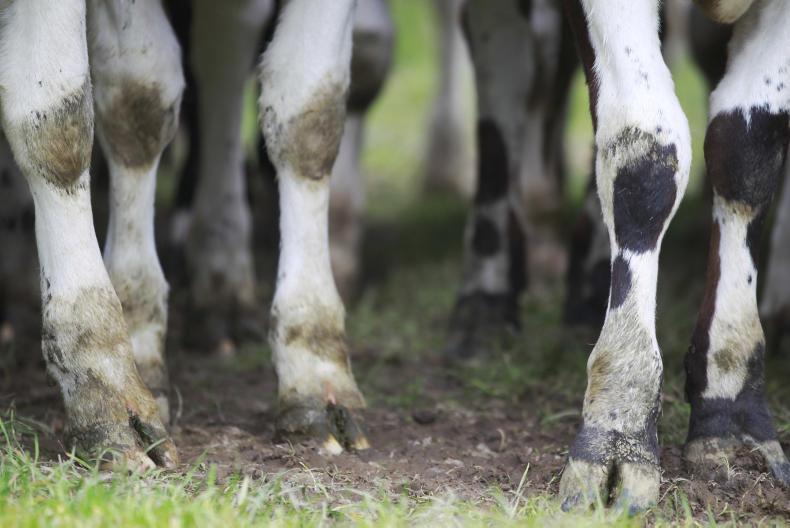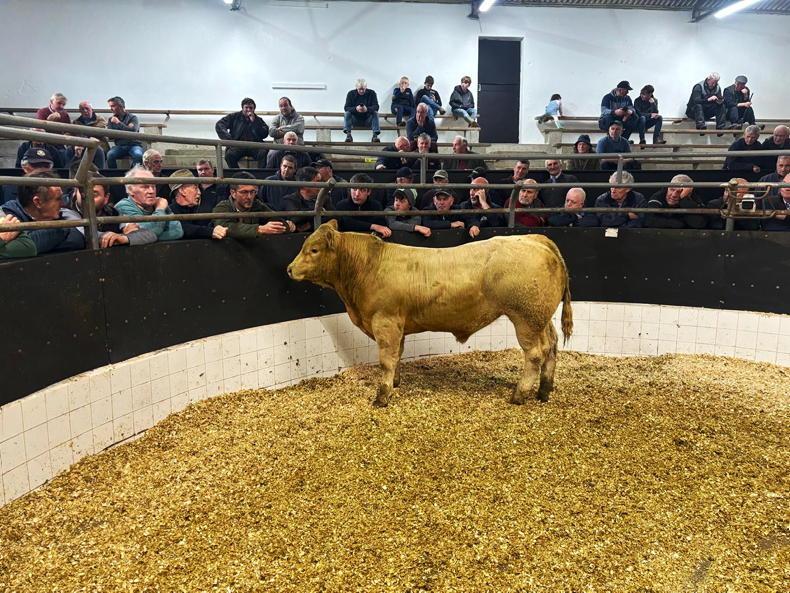Livestock pose one of the most serious safety threats to farmers. Although suckler cows can be at their most dangerous around calving, every time they are handled they pose a serious threat.
Another major factor in the high level of injuries to farmers caused by livestock is the fact that the average age of the Irish farmer continues to rise.
National farm survey data shows the average age of a farmer in Ireland is 57 years, and over 25% of farmers are over 64 years of age. As the farming population gets older, there is an increased risk of injury caused by livestock.
Handling suckler cows and calves
We are now approaching the peak of weanling sales around the country. At this stage of the year, farmers are starting to wean calves from cows. While calving may be a high-risk period for cow aggression, weaning can also be a more risky period on farms.
Immediate weaning can lead to more aggression by both the calf and the cow as they look for each other.
Where possible, a more staggered weaning process can be most beneficial to keep animals as settled as possible.
Meal feeding cannot be overestimated. Along with benefits of maintaining high animal liveweight gains at weaning, it also gets calves into the habit of being handled by the farmer and moved.
Staggered weaning will help reduce the stress on the cow and calf and keep them more settled.
Where possible, on-off suckling before weaning, or separating calves from cows during the day will also help reduce the stress on animals at weaning and keep them more settled and safer for handling.
Where weanling bulls are left entire and are eight to 10 months around weaning and sale, extra care should be taken when moving or handling. Bulls can pose a serious risk to farmers, especially if they are not used to being moved or handled.
Where you are considering loading bulls for the mart ring, ensure the pen or handling facilities are secure.
High sides will stop cattle from trying to jump over the sides or gates within the pen.
When the trailer is backed in, the loading door should close securely. Shut off the front of the pen too, so cattle cannot escape.
Never handle cattle on your own
Where possible, always have help at hand when moving or loading livestock or weanlings on to the trailer.
Ensure you have a stick and pay particular attention when loading weanling bulls.
The stick should be about 1-1.2m in length, so cattle can be prodded without coming into kicking distance of the animal.
When cattle are moving within a pen, avoid standing in the centre and never turn your back on any of the cattle or bulls.
Cattle pens should be designed in such a fashion as to allow the farmer to step out of the pen quickly if there is danger.
Read more
Top safety tips for handling and spreading fertiliser
Livestock pose one of the most serious safety threats to farmers. Although suckler cows can be at their most dangerous around calving, every time they are handled they pose a serious threat.
Another major factor in the high level of injuries to farmers caused by livestock is the fact that the average age of the Irish farmer continues to rise.
National farm survey data shows the average age of a farmer in Ireland is 57 years, and over 25% of farmers are over 64 years of age. As the farming population gets older, there is an increased risk of injury caused by livestock.
Handling suckler cows and calves
We are now approaching the peak of weanling sales around the country. At this stage of the year, farmers are starting to wean calves from cows. While calving may be a high-risk period for cow aggression, weaning can also be a more risky period on farms.
Immediate weaning can lead to more aggression by both the calf and the cow as they look for each other.
Where possible, a more staggered weaning process can be most beneficial to keep animals as settled as possible.
Meal feeding cannot be overestimated. Along with benefits of maintaining high animal liveweight gains at weaning, it also gets calves into the habit of being handled by the farmer and moved.
Staggered weaning will help reduce the stress on the cow and calf and keep them more settled.
Where possible, on-off suckling before weaning, or separating calves from cows during the day will also help reduce the stress on animals at weaning and keep them more settled and safer for handling.
Where weanling bulls are left entire and are eight to 10 months around weaning and sale, extra care should be taken when moving or handling. Bulls can pose a serious risk to farmers, especially if they are not used to being moved or handled.
Where you are considering loading bulls for the mart ring, ensure the pen or handling facilities are secure.
High sides will stop cattle from trying to jump over the sides or gates within the pen.
When the trailer is backed in, the loading door should close securely. Shut off the front of the pen too, so cattle cannot escape.
Never handle cattle on your own
Where possible, always have help at hand when moving or loading livestock or weanlings on to the trailer.
Ensure you have a stick and pay particular attention when loading weanling bulls.
The stick should be about 1-1.2m in length, so cattle can be prodded without coming into kicking distance of the animal.
When cattle are moving within a pen, avoid standing in the centre and never turn your back on any of the cattle or bulls.
Cattle pens should be designed in such a fashion as to allow the farmer to step out of the pen quickly if there is danger.
Read more
Top safety tips for handling and spreading fertiliser









SHARING OPTIONS